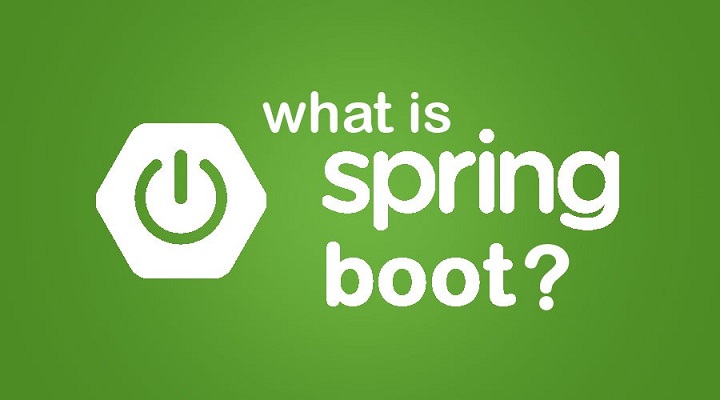
To configure your own DataSource for SpringBoot, with fully automatic initialization, semi-auto or static configuration. With various properties or a JNDI.
Steps
- DataSources Examples AutoConfig Semi AutoConfig Static
- Common Test & Entity
1. DataSource AutoConfig (SpringBoot)
Source Code
Application.java
package com.damienfremont.blog;
import org.springframework.boot.*;
import org.springframework.boot.autoconfigure.*;
@SpringBootApplication
@EnableAutoConfiguration
public class Application {
public static void main(String[] args) {
SpringApplication.run(Application.class, args);
}
}
application.properties
# ===================================================================
# COMMON SPRING BOOT PROPERTIES
# ===================================================================
# https://docs.spring.io/spring-boot/docs/current/reference/html/common-application-properties.html
# ----------------------------------------
# DATA PROPERTIES
# ----------------------------------------
# DATASOURCE (DataSourceAutoConfiguration & DataSourceProperties)
#spring.datasource.jndi-name=XXX
spring.datasource.driver-class-name=org.hsqldb.jdbc.JDBCDriver
spring.datasource.url=jdbc:hsqldb:file:db/testdb
spring.datasource.username=sa
spring.datasource.password=sa
Config Key Value References
spring.datasource.continue-on-error=false # Do not stop if an error occurs while initializing the database.
spring.datasource.data= # Data (DML) script resource references.
spring.datasource.data-username= # User of the database to execute DML scripts (if different).
spring.datasource.data-password= # Password of the database to execute DML scripts (if different).
spring.datasource.dbcp2.*= # Commons DBCP2 specific settings
spring.datasource.driver-class-name= # Fully qualified name of the JDBC driver. Auto-detected based on the URL by default.
spring.datasource.generate-unique-name=false # Generate a random datasource name.
spring.datasource.hikari.*= # Hikari specific settings
spring.datasource.initialize=true # Populate the database using 'data.sql'.
spring.datasource.jmx-enabled=false # Enable JMX support (if provided by the underlying pool).
spring.datasource.jndi-name= # JNDI location of the datasource. Class, url, username & password are ignored when set.
spring.datasource.name=testdb # Name of the datasource.
spring.datasource.password= # Login password of the database.
spring.datasource.platform=all # Platform to use in the DDL or DML scripts (e.g. schema-${platform}.sql or data-${platform}.sql).
spring.datasource.schema= # Schema (DDL) script resource references.
spring.datasource.schema-username= # User of the database to execute DDL scripts (if different).
spring.datasource.schema-password= # Password of the database to execute DDL scripts (if different).
spring.datasource.separator=; # Statement separator in SQL initialization scripts.
spring.datasource.sql-script-encoding= # SQL scripts encoding.
spring.datasource.tomcat.*= # Tomcat datasource specific settings
spring.datasource.type= # Fully qualified name of the connection pool implementation to use. By default, it is auto-detected from the classpath.
spring.datasource.url= # JDBC url of the database.
spring.datasource.username= # Login user of the database.
spring.datasource.xa.data-source-class-name= # XA datasource fully qualified name.
spring.datasource.xa.properties= # Properties to pass to the XA data sour
https://docs.spring.io/spring-boot/docs/current/reference/html/common-application-properties.html source: https://docs.spring.io/spring-boot/docs/current/reference/html/common-application-properties.html
2. DataSource Semi-AutoConfig (SpringBoot)
Source Code
Application.java
package com.damienfremont.blog;
import org.springframework.boot.*;
import org.springframework.boot.autoconfigure.*;
@SpringBootApplication( //
scanBasePackageClasses = { DataSourceConfig.class })
@EnableAutoConfiguration
public class Application {
public static void main(String[] args) {
SpringApplication.run(Application.class, args);
}
}
DataSourceConfig.java
package com.damienfremont.blog;
import java.sql.*;
import javax.sql.*;
import org.springframework.context.annotation.*;
import org.springframework.boot.autoconfigure.jdbc.*;
import org.springframework.boot.context.properties.*;
import org.springframework.jdbc.core.*;
@Configuration
public class DataSourceConfig {
private final static String DRIVER_CLASSNAME = "org.hsqldb.jdbc.JDBCDriver";
@Bean
public JdbcTemplate jdbcTemplate(DataSource dataSource) {
return new JdbcTemplate(dataSource);
}
// AUTO FILL MISSING PROPERTIES BY SPRINGBOOT (USR, PASS, URL, ...)
@Bean
@ConfigurationProperties(prefix = "datasource")
public DataSource dataSourceProperties() throws SQLException {
return DataSourceBuilder.create() //
.driverClassName(DRIVER_CLASSNAME) //
.build();
}
}
application.properties
# ===================================================================
# COMMON SPRING BOOT PROPERTIES
# ===================================================================
# https://docs.spring.io/spring-boot/docs/current/reference/html/common-application-properties.html
# ----------------------------------------
# DATA PROPERTIES
# ----------------------------------------
# DATASOURCE (DataSourceAutoConfiguration & DataSourceProperties)
datasource.url=jdbc:hsqldb:file:db/testdb
datasource.username=sa
datasource.password=sa<span data-mce-type="bookmark" id="mce_SELREST_start" data-mce-style="overflow:hidden;line-height:0" style="overflow:hidden;line-height:0" ></span>
3. DataSource Static Config (SpringBoot)
Source Code
Application.java
package com.damienfremont.blog;
import org.springframework.boot.*;
import org.springframework.boot.autoconfigure.*;
@SpringBootApplication( //
scanBasePackageClasses = { DataSourceConfig.class })
public class Application {
public static void main(String[] args) {
SpringApplication.run(Application.class, args);
}
}
DataSourceConfig.java
package com.damienfremont.blog;
import java.sql.*;
import javax.naming.*;
import javax.sql.DataSource;
import org.springframework.context.annotation.*;
import org.springframework.boot.autoconfigure.jdbc.*;
import org.springframework.beans.factory.annotation.*;
import org.springframework.jdbc.core.*;
@Configuration
public class DataSourceConfig {
// PROPERTIES
@Value("${datasource.jndiname:DS}") private String jndi;
@Value("${datasource.driverClassName}") private String driverClassName;
@Value("${datasource.url}") private String url;
@Value("${datasource.username}") private String username;
@Value("${datasource.password}") private String password;
@Bean
public DataSource dataSource() throws Exception {
DataSource ds;
try {
ds = dataSourceJNDI();
} catch (NamingException e) {
ds = dataSourceProperties();
}
return ds;
}
@Bean
public JdbcTemplate jdbcTemplate(DataSource dataSource) {
return new JdbcTemplate(dataSource);
}
DataSource dataSourceProperties() throws SQLException {
return DataSourceBuilder.create() //
.driverClassName(driverClassName) //
.url(url) //
.username(username) //
.password(password) //
.build();
}
DataSource dataSourceJNDI() throws NamingException {
return (DataSource) new InitialContext() //
.lookup(jndi);
}
}
application.properties
# ----------------------------------------
# DATA PROPERTIES
# ----------------------------------------
# DATASOURCE (DataSourceAutoConfiguration & DataSourceProperties)
#datasource.jndiname=DS
datasource.driverClassName=org.hsqldb.jdbc.JDBCDriver
datasource.url=jdbc:hsqldb:file:db/testdb
datasource.username=sa
datasource.password=sa
5. Data Source Test (JUnit+HSQLDB)
The same test can be used on all the previous DataSource implementations.
Source Code
DataSourceTest.java
package com.damienfremont.blog;
import static org.junit.Assert.*;
import org.junit.*;
import org.junit.runner.*;
import org.springframework.beans.factory.annotation.Autowired;
import org.springframework.boot.test.context.SpringBootTest;
import org.springframework.test.context.junit4.SpringRunner;
@RunWith(SpringRunner.class)
@SpringBootTest(classes = Application.class)
public class DataSourceTest {
@Autowired
private GenericEntityRepository data;
@Test
public void test() {
GenericEntity newEntity = new GenericEntity("test");
GenericEntity savedEntity = data.save(newEntity);
GenericEntity foundEntity = data.findOne(savedEntity.getId());
assertNotNull(foundEntity);
assertEquals(newEntity.getValue(), savedEntity.getValue());
assertEquals(newEntity.getValue(), foundEntity.getValue());
}
}
GenericEntity.java
package com.damienfremont.blog;
import javax.persistence.*;
@Entity
public class GenericEntity {
// PROPERTIE(S)
@Id @GeneratedValue(strategy = GenerationType.AUTO)
private Long id;
private String value;
// CONSTRUCTOR(S)
public GenericEntity() { }
public GenericEntity(String value) { this.value = value; }
// ACCESSOR(S)
public Long getId() { return id; }
public void setId(Long id) { this.id = id; }
public String getValue() { return value; }
public void setValue(String value) { this.value = value; }
}
GenericEntityRepository.java
package com.damienfremont.blog;
import org.springframework.data.jpa.repository.*;
public interface GenericEntityRepository //
extends JpaRepository<GenericEntity, Long> {
}
pom.xml
<project xmlns="http://maven.apache.org/POM/4.0.0" xmlns:xsi="http://www.w3.org/2001/XMLSchema-instance" xsi:schemaLocation="http://maven.apache.org/POM/4.0.0 http://maven.apache.org/xsd/maven-4.0.0.xsd">
<modelVersion>4.0.0</modelVersion>
<parent>
<groupId>org.springframework.boot</groupId>
<artifactId>spring-boot-starter-parent</artifactId>
<version>1.5.8.RELEASE</version>
</parent>
<groupId>com.damienfremont.blog</groupId>
<artifactId>springboot-datasource-1-autoconfig</artifactId>
<version>0.0.1-SNAPSHOT</version>
<packaging>jar</packaging>
<properties>
<project.build.sourceEncoding>UTF-8</project.build.sourceEncoding>
<java.version>8</java.version>
</properties>
<dependencies>
<dependency>
<groupId>org.springframework.boot</groupId>
<artifactId>spring-boot-starter-web</artifactId>
</dependency>
<!-- DATA -->
<dependency>
<groupId>org.apache.commons</groupId>
<artifactId>commons-dbcp2</artifactId>
</dependency>
<dependency>
<groupId>org.springframework</groupId>
<artifactId>spring-jdbc</artifactId>
</dependency>
<dependency>
<groupId>org.springframework.data</groupId>
<artifactId>spring-data-jpa</artifactId>
</dependency>
<dependency>
<groupId>org.hibernate</groupId>
<artifactId>hibernate-entitymanager</artifactId>
</dependency>
<!-- DATA DRIVER -->
<dependency>
<groupId>org.hsqldb</groupId>
<artifactId>hsqldb</artifactId>
</dependency>
<!-- TEST -->
<dependency>
<groupId>junit</groupId>
<artifactId>junit</artifactId>
<scope>test</scope>
</dependency>
<dependency>
<groupId>org.springframework.boot</groupId>
<artifactId>spring-boot-starter-test</artifactId>
<scope>test</scope>
</dependency>
</dependencies>
<build>
<plugins>
<plugin>
<groupId>org.apache.maven.plugins</groupId>
<artifactId>maven-compiler-plugin</artifactId>
<configuration>
<source>1.${java.version}</source>
<target>1.${java.version}</target>
</configuration>
</plugin>
</plugins>
</build>
</project>
Source Code
https://github.com/DamienFremont/damienfremont.com-blog-labs/tree/master/20171119-springboot-datasource https://github.com/DamienFremont/damienfremont.com-blog-labs/tree/master/20171119-springboot-datasource
References
https://docs.spring.io/spring-boot/docs/current/reference/htmlsingle/#howto-configure-a-datasource https://docs.spring.io/spring-boot/docs/current/reference/htmlsingle/#howto-configure-a-datasource
https://docs.spring.io/spring-boot/docs/current/reference/html/common-application-properties.html https://docs.spring.io/spring-boot/docs/current/reference/html/common-application-properties.html
http://www.baeldung.com/spring-boot-custom-auto-configuration http://www.baeldung.com/spring-boot-custom-auto-configuration
https://spring.io/blog/2014/03/07/deploying-spring-boot-applications https://spring.io/blog/2014/03/07/deploying-spring-boot-applications
http://www.baeldung.com/spring-testing-separate-data-source http://www.baeldung.com/spring-testing-separate-data-source
https://docs.spring.io/spring-boot/docs/current/reference/html/howto-data-access.html https://docs.spring.io/spring-boot/docs/current/reference/html/howto-data-access.html
Origin
https://damienfremont.com/2017/11/19/howto-springboot-datasource/











